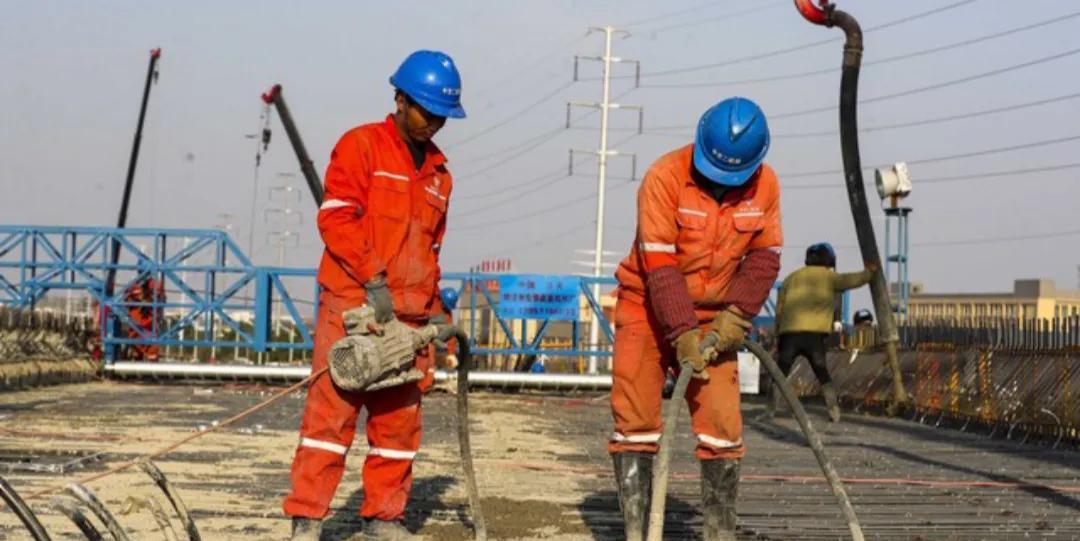
Cracks in concrete structures can be divided into microscopic cracks and macroscopic cracks.
The main cause of cracks in concrete
There are three main reasons for the macroscopic cracks of concrete structures, one is caused by external loads, which is the most common situation, that is, caused by the main stresses calculated according to conventional calculations; the second is the cracks caused by the secondary stress of the structure, which is caused by the difference between the actual working state of the structure and the calculation hypothetical model; the third is the crack caused by the deformation stress, which is caused by temperature, contraction, expansion, uneven settlement and other factors caused by structural deformation, and when the deformation is constrained, the stress is generated. Cracks occur when this stress exceeds the tensile strength of the concrete.
When the concrete structure is deformed, the interior of the structure, the structure and the structure, will be affected by each other, mutual restriction, this phenomenon is called constraint. When the section of the concrete structure is thicker, its internal temperature and humidity distribution is uneven, causing the deformation of different parts of the interior to constrain each other, such a constraint is called internal constraint; when the deformation of a structure is hindered by other structures, the constraint is called external constraint. External constraints can be divided into free body, full constraint and elastic constraint. The deformation of large-volume concrete structures in construction works is mainly caused by temperature differences and shrinkage.
In the large-volume concrete structure in the construction project, due to the large structural cross-section and the amount of cement used, the hydration heat released by cement hydration will produce a large temperature change and shrinkage effect, and the resulting temperature shrinkage stress is the main reason for cracks in reinforced concrete. There are two kinds of cracks: surface cracks and through cracks. The surface crack is caused by the different heat dissipation conditions on the surface and inside of the concrete, the temperature is low outside and high inside, forming a temperature gradient, so that the compressive stress is generated inside the concrete, the tensile stress is generated on the surface, and the tensile stress on the surface exceeds the tensile strength of the concrete. The penetration crack is due to the fact that the large volume of concrete develops to a certain extent in strength, the concrete gradually cools down, the deformation caused by this cooling difference plus the volume shrinkage deformation caused by the water loss of the concrete, the tensile stress caused by the constraint of the foundation and other structural boundary conditions, and the crack that may occur when the tensile strength of the concrete exceeds the entire section. These two kinds of cracks are harmful cracks to varying degrees.
The early shrinkage of high-strength concrete is larger, which is due to the substitution of 30% to 60% mineral fine admixture in high-strength concrete, the amount of high-efficiency water reducer is 1% to 2% of the total amount of cementitious material, and the water-to-glue ratio is 0.25~0.40, which improves the microstructure of concrete and brings many excellent characteristics to high-strength concrete, but its negative effect is the increase in the probability of shrinkage cracks in concrete. The shrinkage of high-strength concrete is mainly dry shrinkage, temperature shrinkage, plastic shrinkage, chemical shrinkage and self-shrinkage. The time when the concrete first crack appears can be used as a reference for judging the cause of the crack: plastic shrinkage cracks appear about a few hours to more than ten hours after pouring; temperature shrinkage cracks appear about 2 to 10 days after pouring; self-shrinkage mainly occurs a few days to dozens of days after concrete condensation hardening; dry shrinkage cracks appear in the nearly 1 age period.
Dry shrinkage: When the concrete loses the adsorption water of the internal pores and gel pores in unsaturated air, it will produce dry shrinkage, and the porosity of high-performance concrete is lower than that of ordinary concrete, so the dry shrinkage rate is also low.
Plastic shrinkage: Plastic shrinkage occurs in the plastic phase before concrete hardens. High-strength concrete water-to-glue ratio is low, less free water, mineral fine admixture has a higher sensitivity to water, high-strength concrete basically does not secrete water, the surface loss of water is faster, so the plastic shrinkage of high-strength concrete is easier to produce than ordinary concrete.
Self-shrinkage: The relative humidity inside the closed concrete decreases with the progress of cement hydration, which is called self-drying. Self-drying causes the moisture in the pores to be unsaturated and generates negative pressure, thus causing self-shrinkage of concrete. Due to the low water-to-glue ratio and the rapid development of early strength, high-strength concrete will make free water consume fast, resulting in relative humidity in the pore system being less than 80%, while the high-strength concrete structure is relatively dense, and it is difficult for external water to penetrate and supplement, resulting in self-shrinkage of concrete. In the total shrinkage of high-strength concrete, dry shrinkage and self-shrinkage are almost equal, and the lower the water-to-glue ratio, the greater the proportion of self-shrinkage. It is completely different from ordinary concrete, ordinary concrete is mainly dry shrinkage, while high-strength concrete is mainly self-shrinkage.
Temperature shrinkage: For concrete with higher strength requirements, the amount of cement is relatively large, the heat of hydration is large, and the temperature rise rate is also large, generally up to 35 ~ 40 ° C, plus the initial temperature can make the maximum temperature exceed 70 ~ 80 ° C. Generally, the thermal expansion coefficient of concrete is 10× 10-6/°C, and the cold shrinkage caused by the temperature drop of 20~25°C is 2~2.5×10-4, while the limit tensile value of concrete is only 1~1.5×10-4, so cold shrinkage often causes concrete cracking.